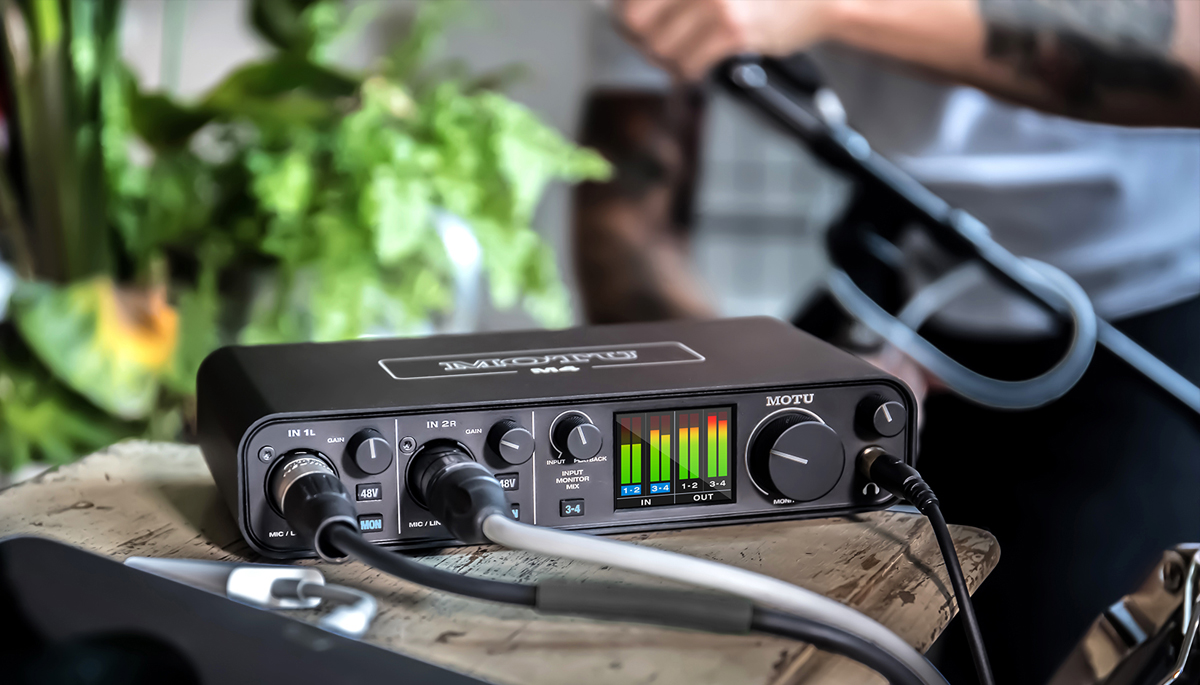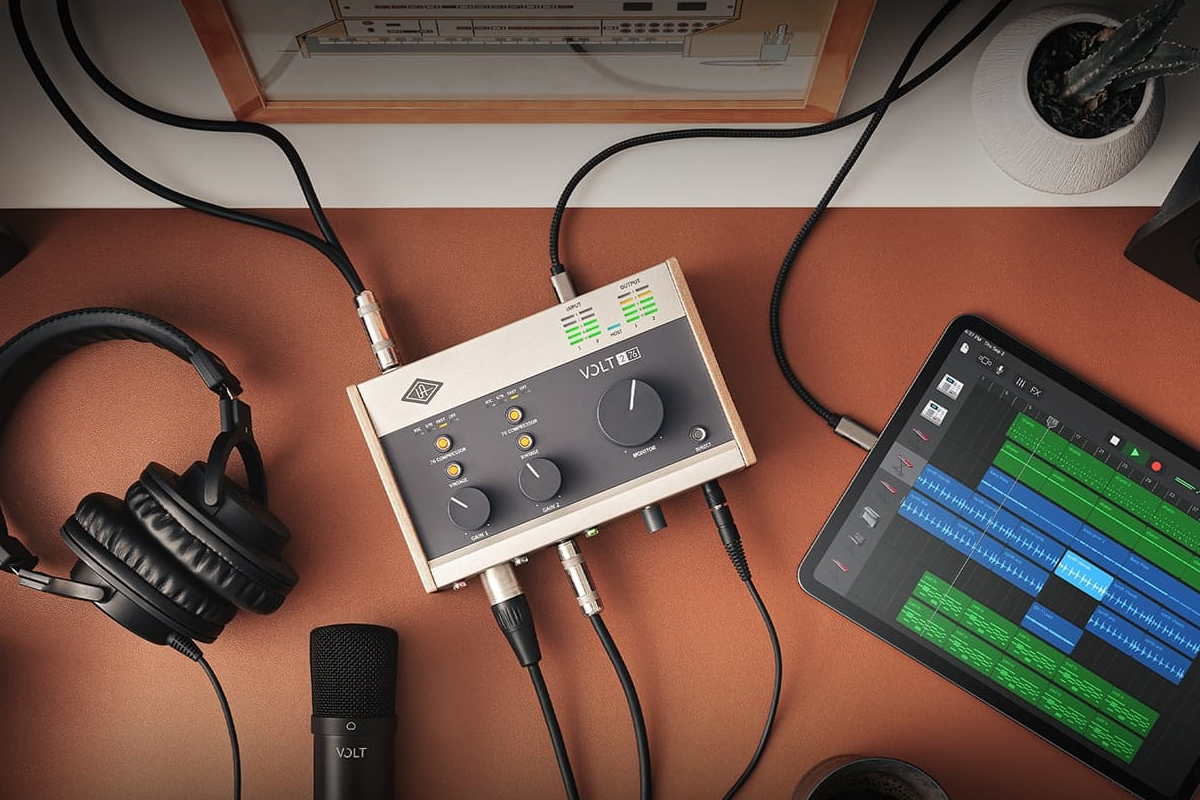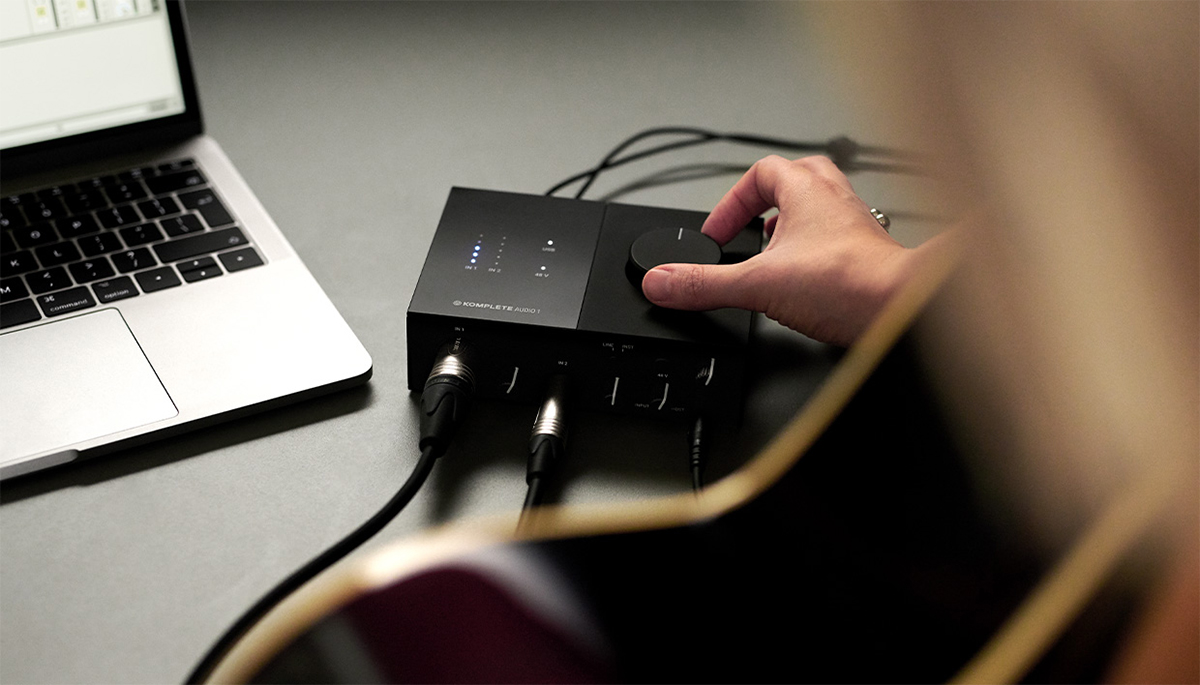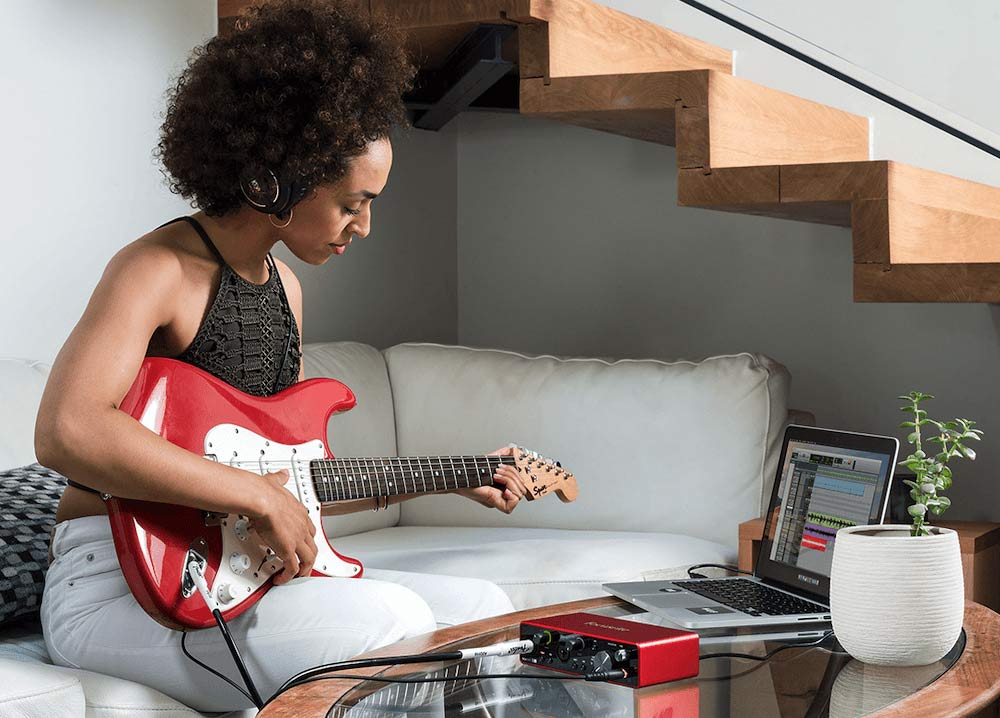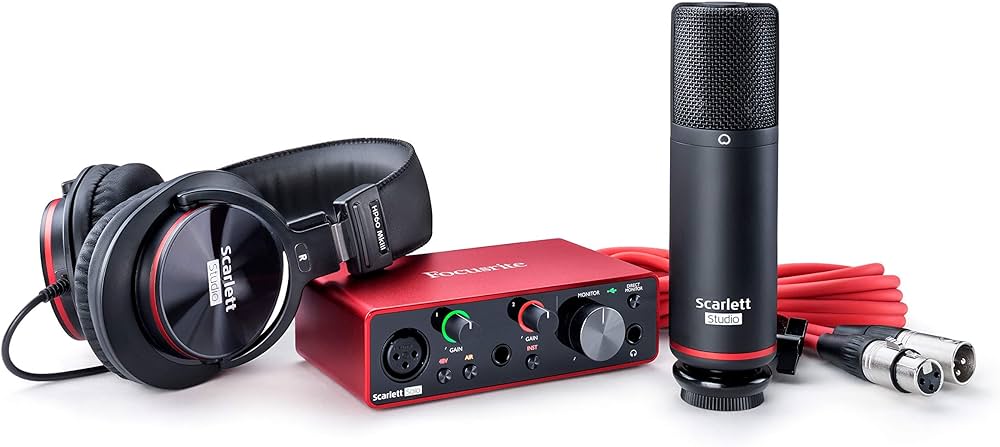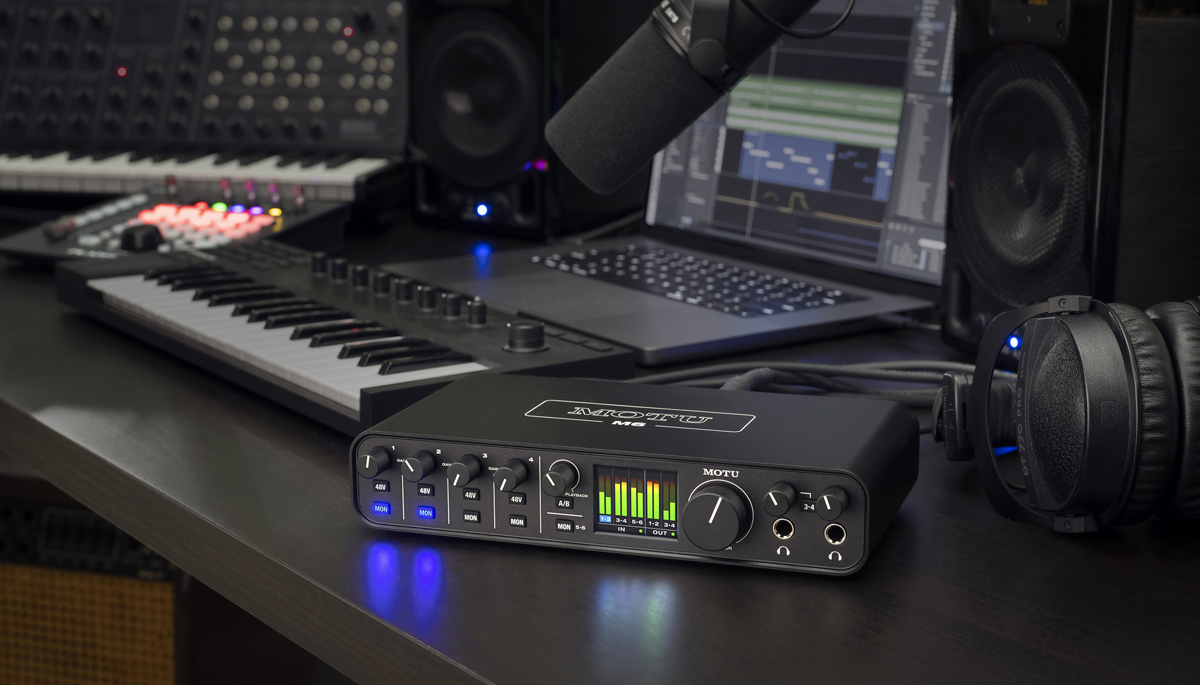It’s true that your computer will probably have an audio output you can use with speakers or headphones. You may even be using Bluetooth to listen to music wirelessly. Both these scenarios let you listen to music at a reasonable level of quality. Let’s assume we’re ignoring built in speakers as they don’t really have anything to offer someone who is building a studio. Onboard audio is fine for listening to music but it starts to fall apart once you get serious about what you need to make music.
You may be using music apps on an iPad and listening via Bluetooth on some speakers. That’s fine, but what happens when you want to record your voice or a guitar? That integrated microphone is not going to give you anything approaching studio quality. You can perform a live stream with it, but it will always sound like you’re singing down a phone. You might be using Ableton Live on a laptop and find the output is just fine through the headphone socket. But what happens if you want to mix in a hardware synth or record some live drums?
You can get by with onboard audio but at some point you will come up against the limitations of what it offers and that will impact your creativity and the ease at which you develop your music.
An audio interface will help you in a number of ways:
- Connections
- Physicality
- Quality
- Latency
